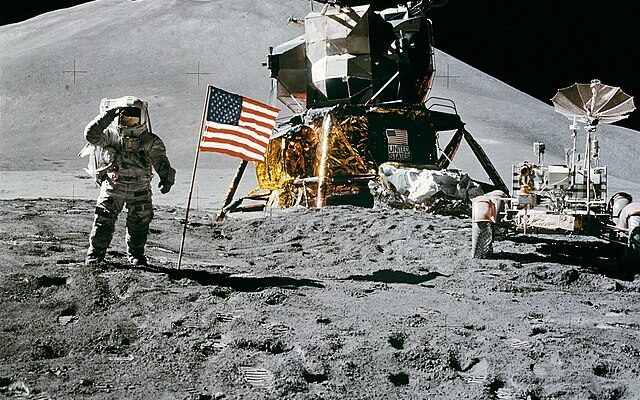
Gravity can do weird things to time. Imagine you’re at the top of a tall building, and your friend is at the bottom. Time flows differently for both of you because of gravity. Gravity is like a force that pulls things towards each other, like the Earth pulling you towards its center.
Here’s how it works: the stronger the gravity, the slower time moves. So, if you’re higher up where gravity is weaker, time actually moves a tiny bit faster for you compared to your friend at the bottom. This effect, predicted by Einstein’s theory of relativity, means that even though you might not notice it in your everyday life, gravity has a subtle influence on how time passes for different observers depending on their location in a gravitational field.
That’s a problem that space organizations, including NASA, are grappling with as more and more public and private companies think about heading back to the Moon.
CBS News explained that “time on the moon moves differently than it does on Earth, which means that using the terrestrial time system, called Coordinated Universal Time, or UTC, wouldn’t work.
UTC is tracked by the weighted average of hundreds of atomic clocks across the planet, with so-called leap seconds periodically added to keep it aligned with the planet’s solar days. But time on Earth doesn’t quite track with lunar time because of relativity….someone on the moon would experience UTC time as distorted, with a terrestrial-based clock appearing to lose 58.7 microseconds each Earth day.”
Come 2026, the Moon will finally have its own timezone, at least if the White House gets its way.
This week, the White House officially tasked NASA with establishing a time standard for the moon, called Coordinated Lunar Time (LTC) in the Office of the President’s memorandum, which international bodies can use to coordinate their activities on the lunar surface, writes Smithsonian Magazine.
The move comes about a year after the European Space Agency (ESA) proposed the creation of a common time reference on the moon. Lunar missions from national agencies and private companies are expected to heavily ramp up in the coming years, with dozens already scheduled. Without a common reference frame, confusion can ensue—from small inconveniences to graver problems, such as mapping inconsistencies and navigation errors.
Imagine if the world wasn’t syncing their clocks to the same time—how disruptive that might be and how challenging everyday things become,” an unnamed White House Office of Science and Technology Policy official tells Reuters’ Joey Roulette and Will Dunham.
“This is why we want to raise an alert now, saying let’s work together to take a common decision,” Patrizia Tavella, who leads the time department at the International Bureau of Weights and Measures in France, told Nature News’ Elizabeth Gibney in January 2023.
Over the past few years there has been a significant paradigm shift in sending people back to the moon. Companies like SpaceX, Blue Origin, and others are spearheading this ambitious endeavor, aiming to establish lunar bases, extract resources, and even facilitate space tourism.
Elon Musk recently claimed that he could get people to the Moon in less than two years.










Only usable if we have a Manned Lunar Base there, otherwise makes No sense